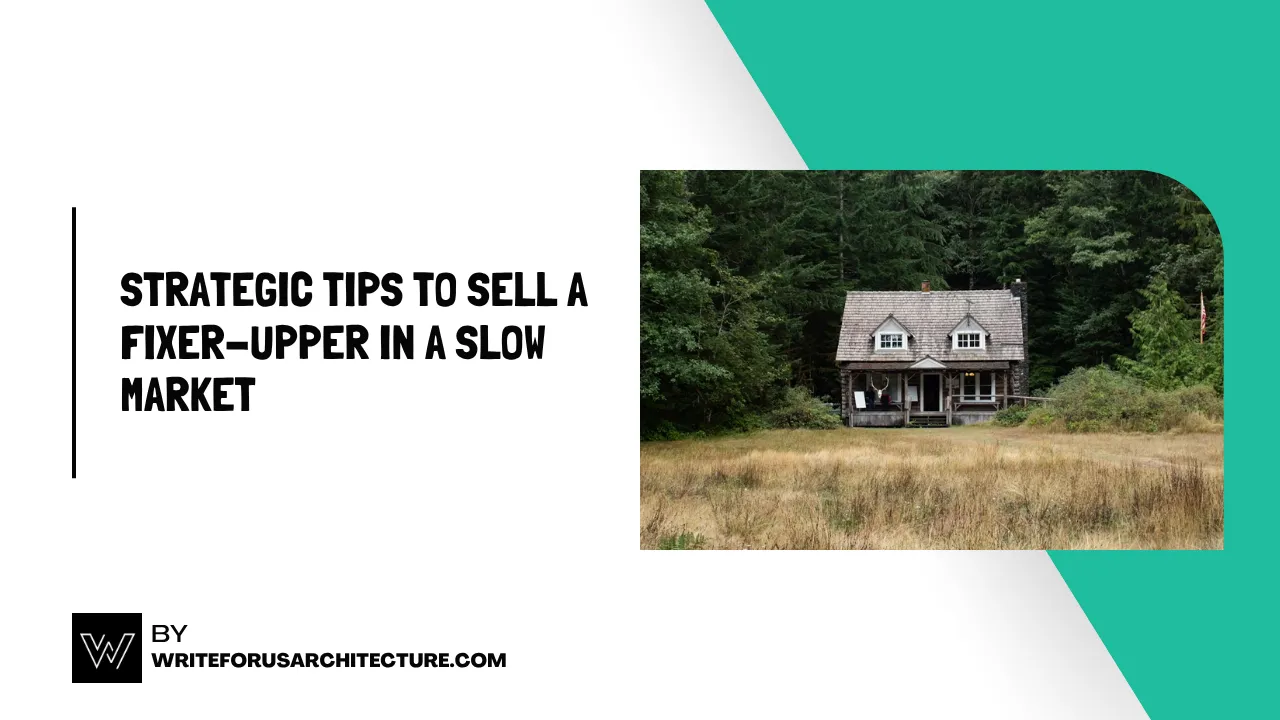Selling a fixer-upper, especially in a slow market, can feel like a tough climb. But with the right strategy, you can turn those hurdles into stepping stones.
The National Association of Realtors states that buying a fixer-upper can save you a change compared to a home ready to move into. Buyers need to factor in renovation costs. In New Orleans, about nine percent of homes are fixer-uppers. On average, these homes are priced around 45% less than their move-in-ready counterparts.
While most buyers might see a long to-do list, you have the chance to help them envision the possibilities. The trick is to showcase what makes your property unique, even if it’s not Instagram-ready.
Even minor adjustments can lead to significant results. Let’s explore some practical, down-to-earth tips to make your fixer-upper appealing to the right buyer. Someone eager to roll up their sleeves can transform it into their dream home.
Understand the Market First
Before listing your fixer-upper, it’s essential to understand the current housing trends and what buyers are looking for. In a slow market, buyers tend to be more selective, and homes that require repair can linger on the market longer. You need to strategize effectively.
PR Newswire states that recent statistics reveal that fixer-uppers are selling for a higher discount. It is around 7.3% less than comparable homes. The reason is that buyers are leaning towards move-in-ready options and are cautious about renovation costs, which have surged due to inflation.
In many regions, the availability of affordable homes isn’t keeping pace with demand, driving prices up while wages stay flat. It makes buyers a bit more price-conscious and cautious with their choices. Understanding these trends allows you to price your property wisely and promote it more effectively. This ultimately enhances your likelihood of making a successful sale.
Tackle Essential Repairs
When trying to sell a fixer-upper in a slow market, taking care of the essential repairs can be your best plan. According to Better Homes & Gardens, the condition of a home plays a crucial role in its marketability.
Homes that are in good shape tend to close at or above their listing price 20% quicker than those that are not as well-kept. The upgrade price and renovations have skyrocketed, more than doubling over the last five years. It is no wonder that many buyers are hesitant to invest in them.
Even if things are moving slowly, fix critical issues such as leaks, wall cracks, damaged flooring, or outdated fixtures. It can enhance the charm and perceived value of your home. You must focus on affordable upgrades and ensure the house looks tidy and well-maintained.
Your roof’s condition is a major determinant for buyers. If your fixer-upper’s roof requires repair, don’t skimp on it. Replacing the fascia board is a good idea as it can instantly give your property an aesthetic and functional upgrade.
According to Belco Forest Products, a high-quality fascia board can be an architectural highlight for a property. At the same time, it protects the home from weather damage and moisture over the years. Buyers will notice the difference, and there is a good chance they will propose offers even in a slow market.
These investments signal to buyers that you mean business and help them overlook the work that still needs to be done. Showcasing these repairs in your listing can make your property stand out from others that might require more effort.
Invest in Curb Appeal
Curb appeal is vital because it impacts property value and marketability. Forbes notes that curb appeal is all about the first impression that potential buyers get when they see a home. This initial look can shape their thoughts on everything from how well the interior looks to what they might expect to pay for the place.
Having a fresh inviting exterior is one of the ways to create a first impression. Start with the essentials, like mowing the lawn and trimming bushes. Add a splash of color with seasonal flowers or a striking front door in a trendy hue. Replace any rusty hardware, update your house numbers, and ensure your mailbox looks neat.
Even small details, like a new welcome mat or a lovely wreath, can give your home a warm and inviting feel. Buyers often judge the entire house by its cover, so investing a bit into curb appeal can pay off.
Highlight the Best Features
When trying to sell a fixer-upper in a slow market, the key is to highlight what makes your property truly special. Consider the standout features, like the original hardwood floors, a generous backyard, or charming architectural details.
Instead of just writing them, bring them to life in your listing and photos so potential buyers can envision the possibilities. Use warm, inviting phrases rather than dwelling on any imperfections.
Help buyers visualize their future in your home. Paint a scene of cozy family get-togethers in that large living room or lively summer barbecues in the yard. If you have any renovation ideas or cost estimates from before and after, you can share them to inspire creativity.
By emphasizing these attractive qualities, you will attract buyers who can see the value and possibilities. It makes your fixer-upper a must-see, even in a competitive market.
Price it Right
Getting the price right for your upper-fixer is the key to selling it, especially in a slow market. The buyers have plenty of choices and time on their hands. Instead of just dreaming big, take a look at what similar homes in your neighborhood have sold for recently. It will give you a perfect reference point.
Next, deduct the estimated costs for repairs from that figure so your price accurately reflects the home’s current condition. If you list your property slightly under market value, it can create a lot of excitement. Just be careful not to set the price too low, as you might lose out on some valuable profit.
Being upfront about necessary repairs fosters trust, and a fair price can make your home an attractive option for investors. In a sluggish market, a well-thought-out price is your best bet for attracting serious offers.
FAQs
When it comes to boosting your home’s resale value, replacing your garage and entry doors is a smart move. Another great option is adding manufactured stone veneer, which enhances your home’s curb appeal. Prioritize curb appeal and energy-efficient upgrades. These changes can help attract buyers and maximize your sale price.
Some renovations can actually make your house worth less. Overly personalized spaces, loud paint colors, or funky wallpaper can also be a turn-off. Moreover, if the work is not accurate or upgrades clash with the neighborhood vibe, you could see a dip in your resale value.
To assess the value of your renovations, start by making a list of all the updates you intend to do. Next, compare your home’s current value with similar renovated homes. The difference you discover is the potential value you could add. You must be realistic. Not every improvement gives the same return.
Navigating the sale of a fixer-upper in a slow market requires a thoughtful strategy and realistic expectations. Teaming up with a savvy real estate agent who knows the ins and outs of the market can make all the difference.
They will provide access to a range of buyers and offer expert guidance along the way. With a bit of patience and the right tactics, you can turn a tough market into a launching pad for your next chapter.
Also Read:

